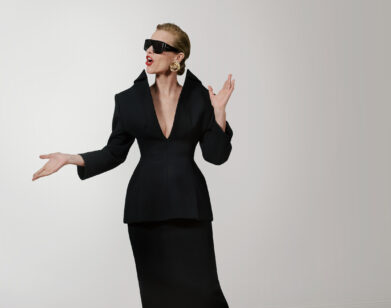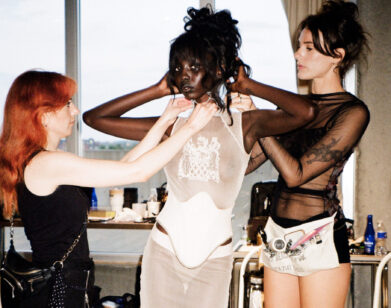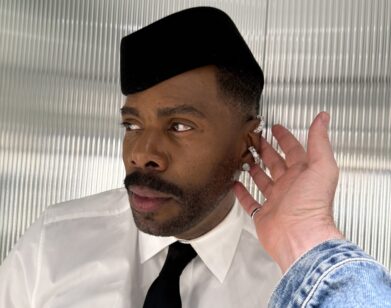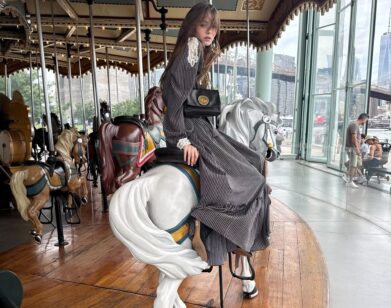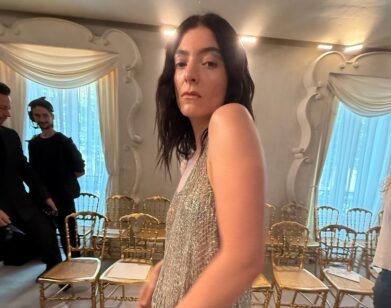Nicole Miller in the Flesh
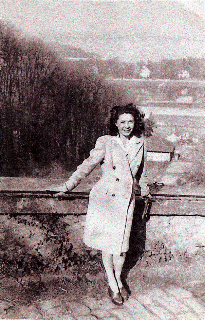
Nicole Miller is the brand with a million faces: from dress-making she’s gone on to accessories, collaborations, sportswear, bridal, lingerie, and even homeware. One could presumably go through life consuming only Nicole Miller-approved items. But who is the woman with that signature signature? She cast celebrities in show before tabloid culture took off, and for one Fabiola Beracasa she was the designer who dressed a first kiaa. Here Beracasa asks the designer about her humble beginnings, and what her line has in common with Balenciaga.
BERACSA: I have to tell you a funny story for you. When I was 15 I kissed my very first boy wearing one of your dresses. I was in boarding school in Switzerland and we would have these mixed dances and I would come home to New York and always go to your store. I remember buying a dress for a dance and then I kissed a boy. It was a big moment for me and I was wearing Nicole Miller.
MILLER: That dress got you in trouble.
BERACASA: [Laughs] A little bit, not too much trouble.
MILLER: I have to show you these old photos that my mom just gave to me. My mother is from Paris, so she was quite a fashion plate. I always had that French influence at home. She used to get Marie Claire magazine—
BERACASA: How old do you think you were?
MILLER: My whole life I guess-since I was four. I just remember that Marie Claire magazine. Vogue would come by boat and it would take 6 weeks to get here. It would take forever.
BERACASA: I love the picture of you in Interview this month.
MILLER: Oh, with that crazy wig?
BERACASA: That’s a wig? Tell me a little bit about that time and the photo. What was going on in your life?
MILLER: Well it’s funny, they were doing these pages on people who were like up and coming. I showed up for my picture and he had this crazy idea: “Wigs! I’m going to put you in wigs!” He had all these crazy wigs in orange and black. I don’t even remember the color the wig was.
BERACASA: Well it’s a black and white photo…
MILLER: I had a color picture of it. The outfit, I remember, was yellow and orange.
BERACASA: I’ll take it up with Interview. I read recently online that you’re from Texas and you studied design in the United States and then you went to France.
MILLER: I went to RISD and then I went to Chambre Syndicale de la Haute Couture. Pierre Cardin, Yves St. Laurent… all those guys went. I had been to this free spirited art school in New York where anything goes, then I go to France, and it was really strict. You went into class in the morning and you just didn’t leave there till 6 at night. When you’re on an American campus you have break between class and you go to the coffee shop and walk around between class.
BERACASA: But the juxtaposition must have really made you who you are.
MILLER: It was great. I did get the art background from RISD and that had sculpture and painting and all kinds of fine arts in addition to fashion. In France it was very technical.
Miller, her mom
BERACASA: Obviously you did really well. You have an incredibly successful business. When I Googled your name everything from Bridal gowns to shower curtains came up.
MILLER: How many Nicole Millers came up?
BERACASA: Not that many.
MILLER: Really? There’s a lot—there’s a basketball champion.
BERACASA: Anyhow, I saw everything from bridal to shower curtain—and cocktail dresses. How do you keep the integrity of the brand?
MILLER: That is always a challenge, and it’s more of a challenge when you deal with things outside the line. I get misunderstood—we have to give people books with directions, which don’t necessarily translate to lingerie and shower curtains.
BERACASA: In 2005 you collaborated with JC Penney, ahead of the curve now that you have people like Karl Lagerfeld collaborating with H&M, or Charlotte Ronson doing JC Penney. How did you take that leap?
MILLER: It was a leap of faith. But I did like the people and I think a lot of times if you deal with the people you like, it’s easier.
BERACASA: You weren’t afraid it would get out of control?
MILLER: I had this idea to use older models and make it an older customer. So we had older models, not that they’re old, but like Tatjana Patitz. They’re all thirtysomething. We had a big range of girls up to Carmen Dell’Orfice. We had a big show in the Four Seasons and somehow that made it work. It really needed to be presented in the right way, but I think from that point on it had credibility.
BERACASA: You always have been a pioneer with runway models. You used Minnie Driver.
MILLER: Oh, actresses…
BERACASA: Actresses, but also models of different ages as you just said.
MILLER: Actually I was forced into doing that. I had been using the top models every year and then one year they boycotted New York because they were trying to raise their rates. They literally went from $500 an hour to $5000 an hour.
BERACASA: Is that the same time that Linda Evangelista said she wouldn’t get out of bed for less than $10,000 a day?
MILLER: It was around that time, maybe ’95. It worked out really well, but in the end I feel like the actresses got so much press that it was more about them than the clothing. But one time we used the MITV VJs. Jenny McCarthy was hilarious on the runway.
BERACASA: It was the same time that actresses started to take magazine covers. You did it first. Were you interested in showing different female bodies?
MILLER: Well certainly when I picked the actresses I wasn’t trying to pick the thinnest. I just picked the girls I thought were cool. They weren’t big stars at the time, but they ended up—Minnie Driver became a huge star. Jill Hennesy did so well. Gretchen Mol did so well. Oh man, Kate Heigl, she got huge too. She didn’t make right away, she made it later on. Oh my god, Gina Gershon. She was funny because she put on a real sex walk.
BERACASA: This is still a privately owned company, which in this day and age is just impossible.
MILLER: I know, and we started on $100,000.
BERACASA: I can’t believe it!
MILLER: In the old days if you had one thing that was a hit, everybody got it. I had this smocked hip dress that everybody in the country wore. We sold thousands and thousands and thousands of them, to the point where we couldn’t get enough fabric to finish them.
BERACASA: Do you still have one?
MILLER: I do have one, somewhere. We sold thousands of them. When I first made it, it looked really avant-garde and cool, but by the end of the year it looked kind of dumb. But it just kept selling year after year, and then everyone copied it until we finally had to stop making it. But that one dress made enough money in cash flow that we could keep working. The first year we shipped $5 million dollars of that one dress.
BERACASA: On $100,000, that’s amazing! What was your reaction to that?
MILLER: “Oh I got really lucky!” It used to be that way, it would be this one item and everyone in New York is wearing it. It’s not like that anymore. There used to be a color of the season too. One season the color was purple and you couldn’t walk down the street without seeing ten people wearing purple. It’s not like that anymore. It used to be you would see people dressed to the nines-really fashiony. Models or people in the industry, really dressed to kill. You don’t see that anymore.
BERACASA: During your career, what has been your most embarrassing moment?
MILLER: Well years ago, Indecent Proposal came out, and Demi Moore had this dress on. Nobody had seen it. And then one of our stores came to us and said, “Oh please, can you make this dress for us? We’ve had so many requests.”
BERACASA: Was it your dress?
MILLER: No, it wasn’t our dress. No one seemed to know whose dress it was. The stores were clamoring for it. Who knew where it came from? So I said OK. It sold out and we made a few more. Then six months later we found it was Thierry Mugler’s dress. We had no idea, nobody had any clue. But other people were watching, because two years ago Balenciaga did a dress that was very similar.

